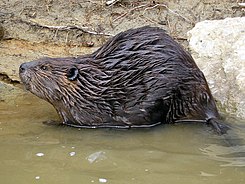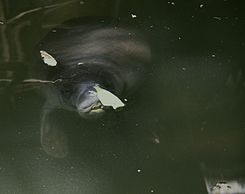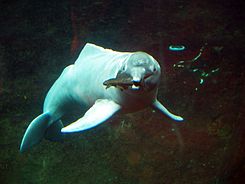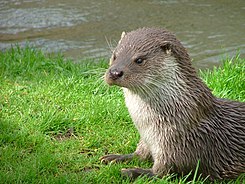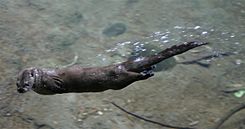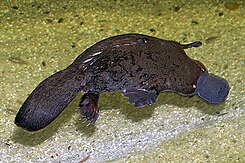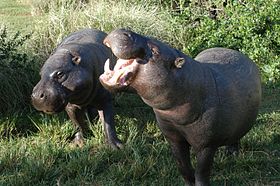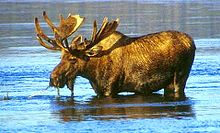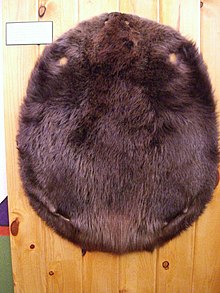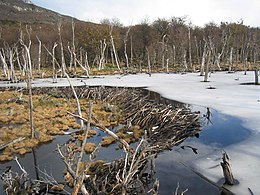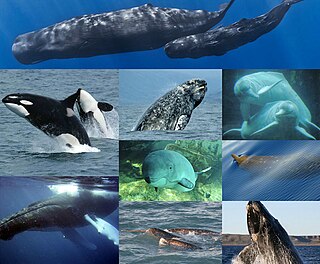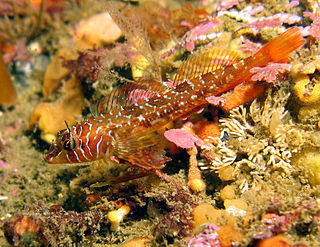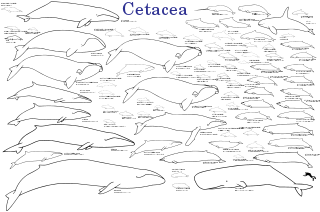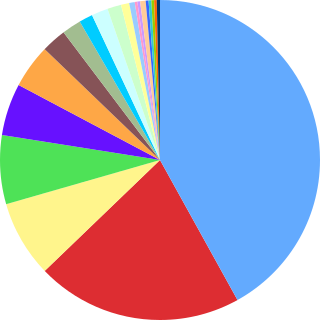
Aquatic and semiaquatic mammals are a diverse group of mammals that dwell partly or entirely in bodies of water. They include the various marine mammals who dwell in oceans, as well as various freshwater species, such as the European otter. They are not a taxon and are not unified by any distinct biological grouping, but rather their dependence on and integral relation to aquatic ecosystems. The level of dependence on aquatic life varies greatly among species. Among freshwater taxa, the Amazonian manatee and river dolphins are completely aquatic and fully dependent on aquatic ecosystems. Semiaquatic freshwater taxa include the Baikal seal, which feeds underwater but rests, molts, and breeds on land; and the capybara and hippopotamus which are able to venture in and out of water in search of food.
Contents
- Taxonomy and evolution
- Groups
- Evolution
- Marine mammals
- Adaptations
- Ecology
- Keystone species
- Diet
- Interactions with humans
- Exploitation
- Habitat degradation
- As food
- See also
- References
- Further reading
Mammal adaptation to an aquatic lifestyle vary considerably between species. River dolphins and manatees are both fully aquatic and therefore are completely tethered to a life in the water. Seals are semiaquatic; they spend the majority of their time in the water, but need to return to land for important activities such as mating, breeding and molting. In contrast, many other aquatic mammals, such as hippopotamus, capybara, and water shrews, are much less adapted to aquatic living. Likewise, their diet ranges considerably as well, anywhere from aquatic plants and leaves to small fish and crustaceans. They play major roles in maintaining aquatic ecosystems, beavers especially.
Aquatic mammals were the target for commercial industry, leading to a sharp decline in all populations of exploited species, such as beavers. Their pelts, suited for conserving heat, were taken during the fur trade and made into coats and hats. Other aquatic mammals, such as the Indian rhinoceros, were targets for sport hunting and had a sharp population decline in the 1900s. After it was made illegal, many aquatic mammals became subject to poaching. Other than hunting, aquatic mammals can be killed as bycatch from fisheries, where they become entangled in fixed netting and drown or starve. Increased river traffic, most notably in the Yangtze river, causes collisions between fast ocean vessels and aquatic mammals, and damming of rivers may land migratory aquatic mammals in unsuitable areas or destroy habitat upstream. The industrialization of rivers led to the extinction of the Chinese river dolphin, with the last confirmed sighting in 2004.
